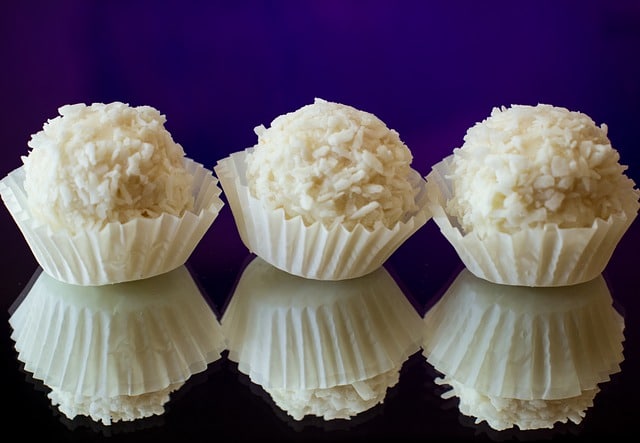
Coconut meat is the main ingredient of cocada.
The notion of cocada can refer to different types of food preparations that are made from coconut . Coconut, meanwhile, is a tree also known as a coconut tree and the fruit of this plant.
The coconut, due to its size and shape, resembles the melon due to its appearance. Inside it has a white pulp and a liquid with cooling properties , while its general structure is protected by two rinds .
Cocada as sweet
In different nations, a sweet whose central ingredient is grated coconut is called cocada . It is estimated that this product was born in Puerto Rican territory by slaves and then spread to other colonies under the rule of Spain .
There are many cocada recipes, which vary depending on the country. Starting from the use of grated coconut, various ingredients are used. Sugar , cinnamon , egg and panela are some of the common components of cocadas.
There are cocadas with a yellow hue since, in their preparation, egg yolks are used. Others maintain the natural white of the pulp . As for the shape, a distinction can be made between cocadas made with a sleeve or mold and those that are more rustic.

There are different types of cocadas.
a drink
In Venezuela , cocada is a drink made from coconut pulp, sugar and water . Its origins are on the island of Margarita , which is located in the Caribbean Sea and is part of the state of Nueva Esparta .
The original recipe involves placing ice , coconut water (the liquid found in the fruit), fresh coconut meat, and sugar in a blender. The goal is to make a kind of slushie .
Among the variants of this preparation, the alternative that consists of adding milk stands out. There are also cocadas that contain cinnamon, modifying the traditional flavor.
Cocada consumption is common on Venezuelan beaches. Consumers usually value the refreshing nature of the drink .
coked and coked
It is important not to confuse a cocada with a coqueada . This second concept is used in Bolivia and Argentina to refer to the practice of chewing acullico , extracting its juice .
Such action is referred to as coking . The coqueada, in this way, involves the chewing of the acullico, a name for a ball made with coca leaves . The juice obtained is characterized by its stimulating effect that helps minimize altitude sickness.
It should be noted that coca is a shrub native to South American territory. From this species, the extraction of the drug known as cocaine , which is an alkaloid , is developed.
Coking, however, is a legal habit that has been carried out for thousands of years. On Argentine soil, for example, both the possession and consumption of coca leaves in their natural form is permitted since it is considered that they are intended for the preparation of infusions (coca tea) or coking. In this way, the coca leaf is not taken as a narcotic, unlike what happens with cocaine (the drug produced through an industrial procedure).
